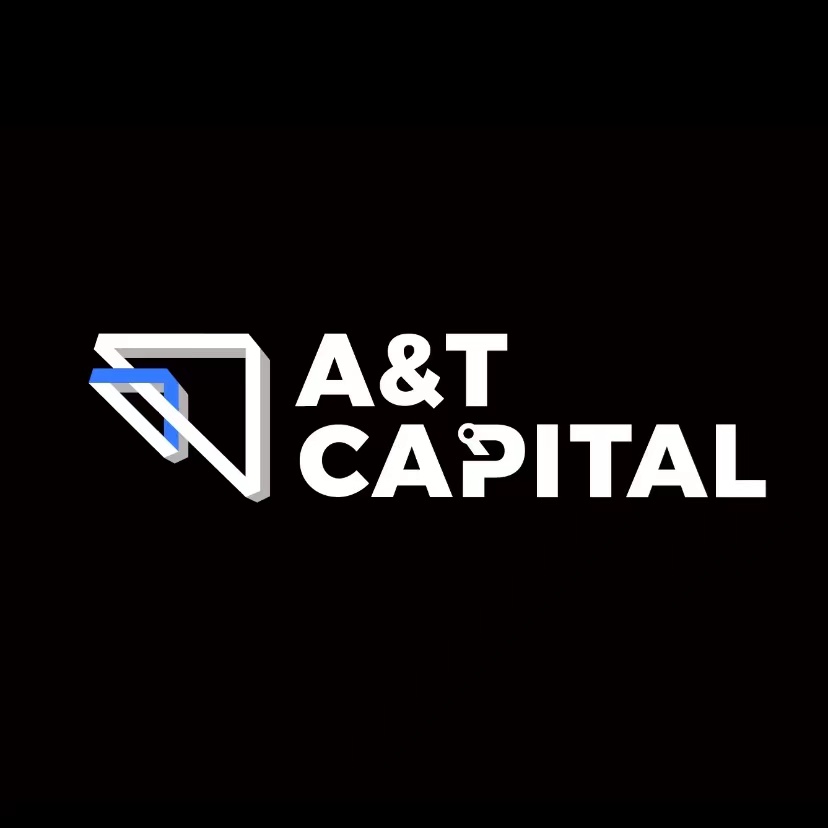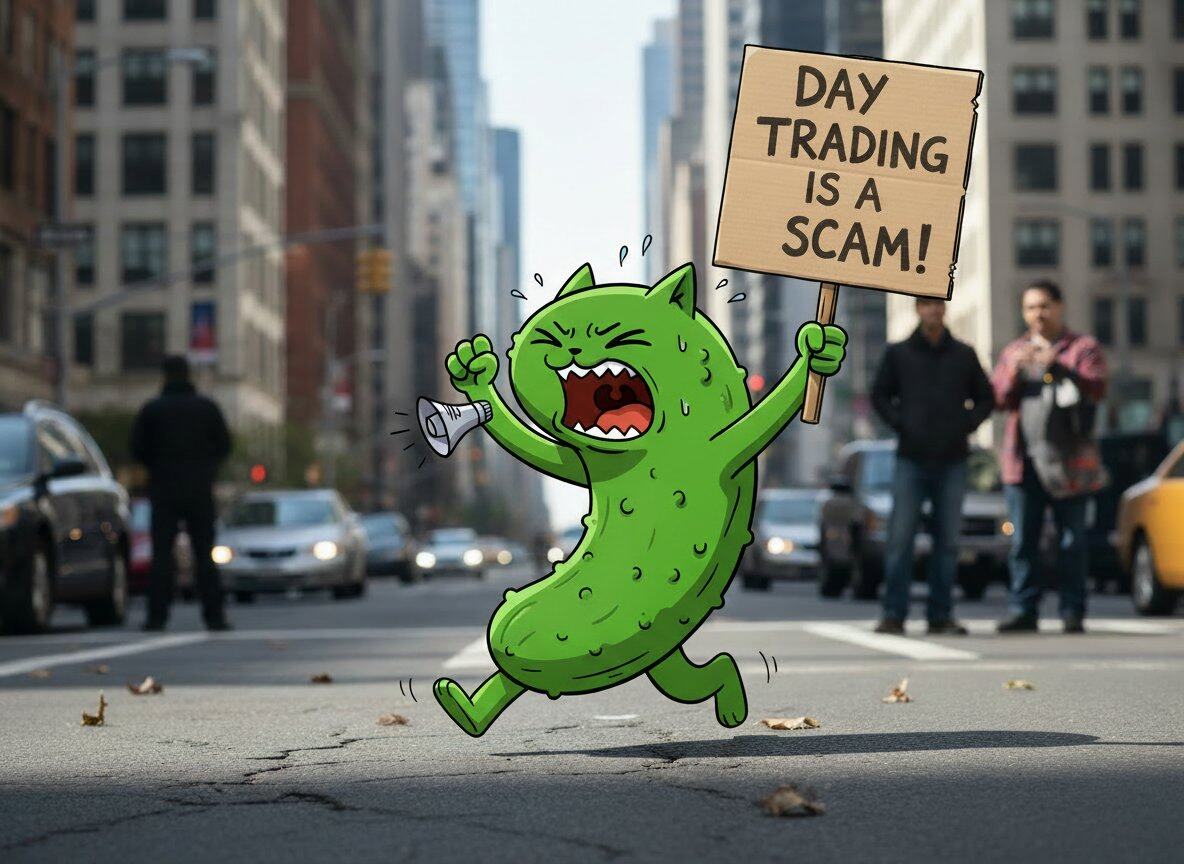A&T Capital: Current status, problems and improvements of Ethereum MEV extraction mechanism
first level title
secondary title
TL; DR
MEV refers to the economic benefits brought to the subject who designed this sequence by executing N transactions in a specific order. When it comes to transaction ordering, the generation of MEV is almost inevitable. How to regulate the extraction of MEV is crucial to the decentralization and anti-censorship of the blockchain network.
After the merger of Ethereum, the extraction and distribution of MEV is dominated by the MEV-Boost system proposed by Flashbots. MEV profits flow to four types of subjects, MEV searchers (Searcher), block builders (Block Builder), block proposers (Block Proposer\Validator) and the Ethereum network itself.
From the perspective of the consequences that MEV brings to the entire system, it can be divided into three categories: beneficial, neutral and harmful. How to avoid harmful MEV extraction and how to distribute beneficial and neutral MEV profits are the core issues to be solved by projects under the MEV track.
Existing private RPC solutions are based on trust assumptions, and user transactions may still be leaked, stolen, and even censored, and the monopoly position of some block builders on private order flow will make MEV extraction easier Opaque and more centralized.
In the MEV profit distribution plan of the MEV-Boost system, the interests of users are not considered. As users, as the role of creating MEV extraction opportunities, it is only the most basic to protect their reasonable interests from being violated. It should not only protect their transactions from being snatched away, but also return part of the MEV profits.
To solve the "running away" problem, encryption technology should be used. Based on "encryption-sorting-decryption-execution", the user's transaction is encrypted locally, and the sorting consensus is completed without anyone reading the transaction content, and then the content is decrypted, and finally the transaction is executed according to the consensus sorting.
first level title
secondary title
1. Who are the stakeholders of MEV?
* What are MEVs? The connotation of MEV in different contexts is not exactly the same. In order to avoid confusion, this article chooses a relatively narrow but most accurate definition:
MEV (Maximum Extractable Value) refers to the economic benefits brought to the subject who designed this sequence by executing N transactions in a specific order.
image description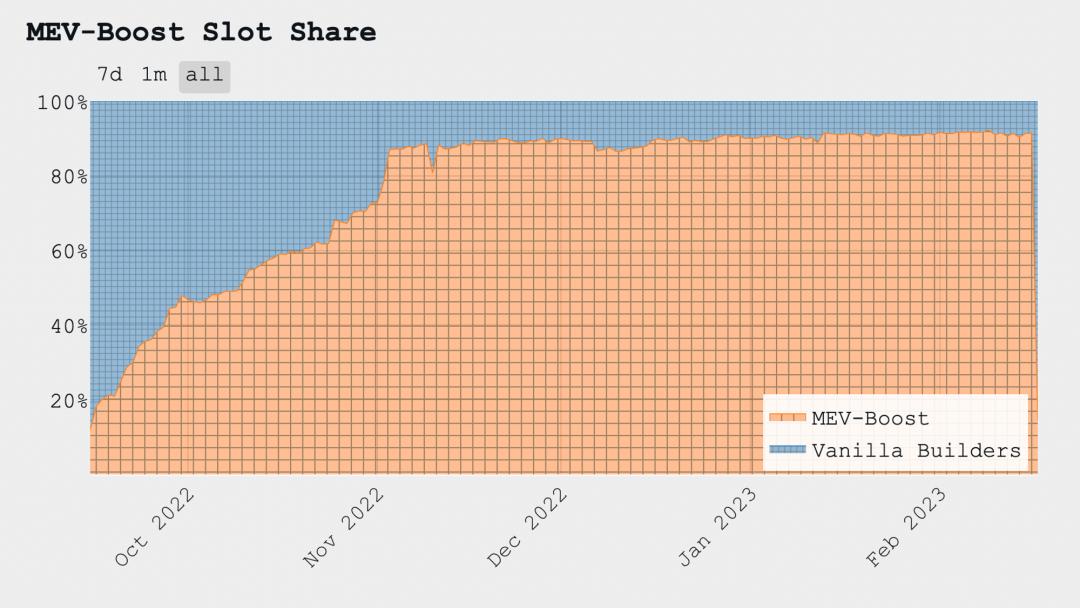
(Figure 1: Slot Share of mevboost.pics statistics)
image description
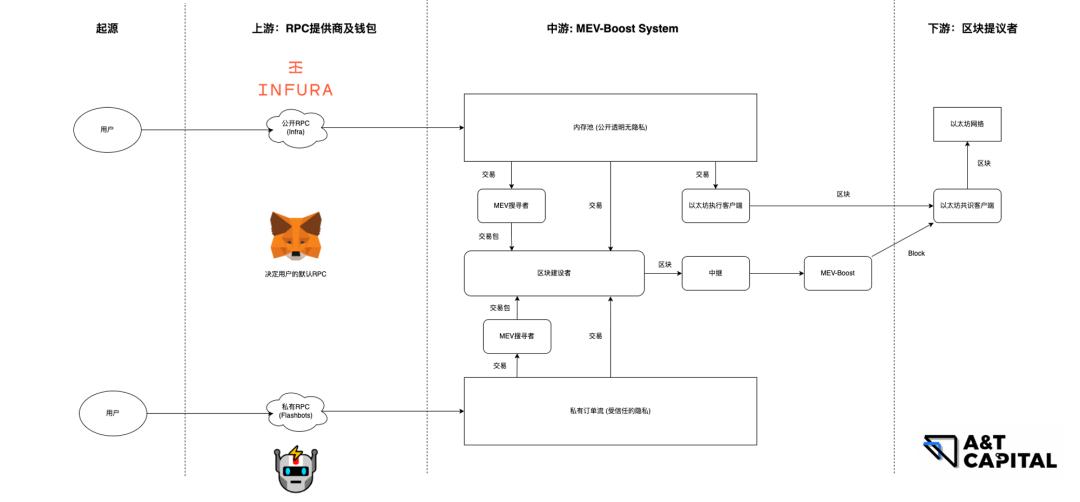
(Figure 2: MEV Value Chain)
Origin: Creating MEV Opportunities, Provides Editable Space for MEV Extraction
User: A general user of the blockchain, the party that initiates a transaction for non-extracting MEV purposes. It can be end users, project parties, oracles, exchanges, etc. These transactions can be considered the "raw materials" extracted by MEV.
Upstream: complete the signature, and then broadcast the transaction from the local to the network
RPC provider: be the first to read the content of the user's transaction and decide where the user's transaction is sent
Wallet: Determines the user's default RPC
Midstream: Auction of MEV opportunities in a public or private environment, determination of MEV profit distribution
Mempool: An open and transparent transaction pool in the Ethereum network, visible to anyone, storing transactions to be packaged and uploaded to the chain.
Private order flow: a trusted private transaction pool, which is only open to specific MEV searchers or block builders, and also stores transactions to be packaged on the chain. Private transaction pools can be created by RPC providers, block builders, or third-party projects.
MEV searcher: Continuously monitor the transactions that have been broadcast by users but have not yet been packaged, search for MEV opportunities from them, package the user's transactions and transactions that can extract MEV into a set of transaction packages (Bundle) in a certain order, and send them to block builders .
Block Builder: Select a series of transactions from the transactions it can receive to pack into a new block and send it to the relay. The sources of transactions include Mempool, Bundles submitted by MEV searchers, and private order streams.
Relay: Select the block that pays the highest fee from the blocks it can receive, and send it to the block proposer.
Downstream: Propose a new block, make the user's transaction and withdrawal MEV transaction be consensus by the network, obtain finality, and realize MEV profit distribution
secondary title
2. How is MEV allocated?
Under the MEV-Boost system, MEV flows to four types of subjects, MEV searchers, block builders, block proposers and the Ethereum network itself.
MEV is directly captured by MEV seekers and flows to block builders, block proposers, and the Ethereum network itself in the form of Gas Fee.
image description
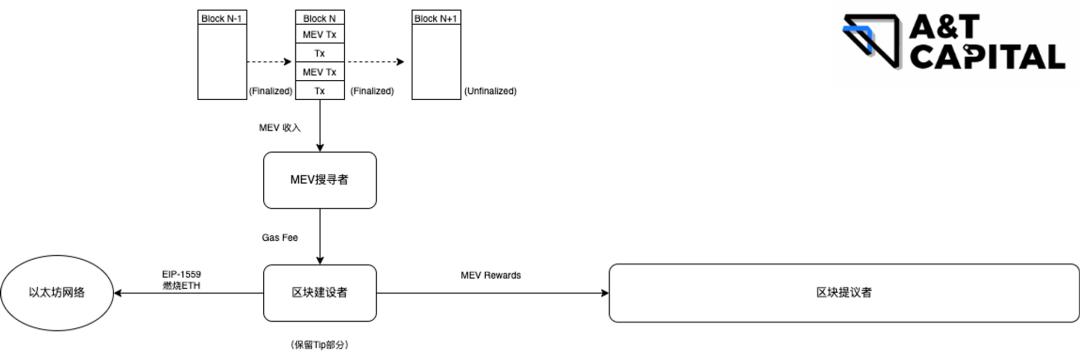
(Figure 3: Distribution Diagram of MEV)
MEV = the profit generated by the execution of a specific order of transactions
MEV = MEV Seeker Profit + Block Builder Profit + Block Proposer Profit + Value Captured by the Ethereum Network
MEV = (Bundles revenue - Gas cost) + (Tip - fee paid to the block proposer) + (fee paid to the block proposer) + (ETH burned by EIP-1559)
For MEV seekers, MEV profit is reflected as "the revenue generated by the execution of the transaction bundles (Bundles) submitted by the MEV seekers minus the gas cost of the transaction bundles".
For block builders, MEV profit is reflected as "execution layer revenue in blocks submitted by block builders minus fees paid to block proposers".
For block proposers, MEV profits are reflected as "fees paid from block builders".
secondary title
3. Types of MEVs
From the perspective of the strategy type of MEV, it can be divided into "follow-running" strategy (Back-running) and "front-running" strategy (Front-running);
From the perspective of the consequences of MEV on the entire system, it can be divided into three categories: beneficial, neutral and harmful:

In practice, there are endless strategies for extracting MEV profits. For different types of MEV, we only give one of the most common examples.
Clearing transactions in lending agreements:
This is a transaction that extracts MEV based on a "follow-and-follow" strategy. The "follow and run" strategy needs to follow a certain transaction to be able to realize it. For example, in an over-collateralized lending agreement, when a change in the oracle machine feed price makes a borrower's account reach a state that can be liquidated, it is profitable to initiate liquidation immediately after the oracle machine feed price change.
Timely liquidation can reduce the probability of bad debts and help maintain the stability of the entire lending agreement, so this type of MEV withdrawal transaction is considered beneficial. Although the essential source of profit is the borrower's loss, it is also a punishment for the borrower's failure to pay off the debt in time, and the borrower also made clear this potential risk when lending funds.
Arbitrage trading across DEX:
It is also a transaction to extract MEV based on the "follow-up" strategy. When a user completes a transaction in a DEX, due to the existence of slippage, there may be price differences for the same Token in different DEXs. MEV seekers can make a profit by buying in a DEX with a low price and selling in a DEX with a high price through an arbitrage transaction.
Sandwich attack:
This is a transaction that extracts MEV based on a "front-running" strategy. When MEV searchers hear that the user’s transaction on DEX has not been packaged and confirmed, they insert a transaction before the user’s transaction, which increases the user’s slippage and lowers the execution price, and inserts another transaction after the user’s transaction. Trades in the opposite direction, profiting from the user's additional slippage losses.
Although the sandwich attack itself is also an arbitrage transaction, its source of profit is the loss of ordinary users, and it is to obtain profits under the premise of harming other users, which is considered harmful.
secondary title
4. What problems does the MEV track project solve? What questions remain?
There is an opportunity to extract MEV when it comes to transaction ordering, and MEV is almost unavoidable. Against this background, projects under the MEV track are dedicated to solving two problems:
1. How can harmful MEVs be prevented?
2. How to distribute beneficial and neutral MEV fairly?
The current solution is to:
Regarding the "prevention" question:
The project party provides users with a private RPC and promises that the transactions broadcast through this RPC will not be rushed. Examples include Flashbots Protect and OpenMEV for Sushi Guard.
image description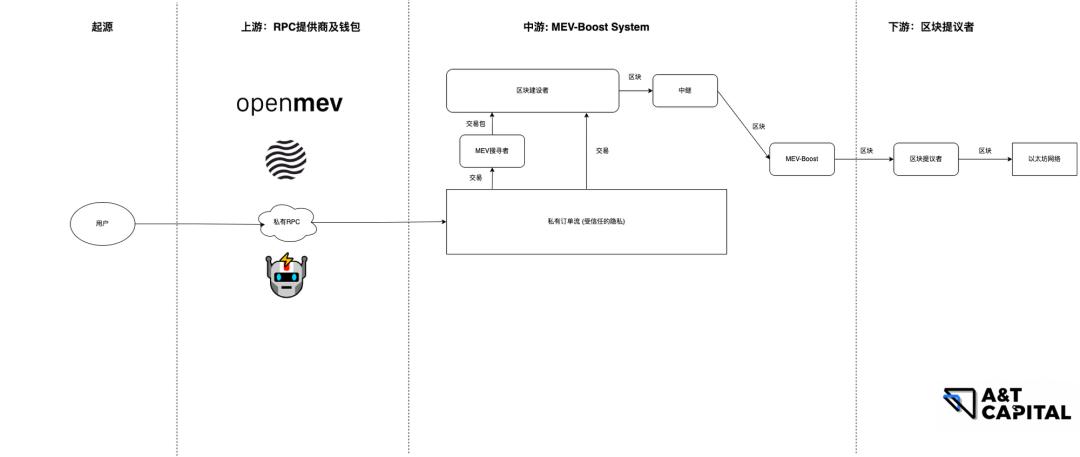
(Figure 4: Current solutions for MEV)
Regarding the "allocation" issue:
MEV-Boost creates an off-chain MEV opportunity auction market, where MEV searchers, block builders, and block proposers perform their duties and share the MEV profits.
MEV searchers compete with hardware and algorithms to find an opportunity to extract MEV within a limited time, and need to make enough profits (pay the highest Gas Fee);
Block builders compete for order flow resources, so that the blocks they build can contain higher execution layer rewards, and the more likely they are accepted by block proposers;
The block proposer has the right to propose new blocks and can decide which transactions are packaged on the chain, but it does not necessarily have the ability to extract MEV as strong as the MEV searcher, nor does it necessarily have the rich order flow resources like the block builder. Instead of only building blocks through the memory pool itself, it is better to access MEV-Boost, "obey" the plan of the block builder, and obtain higher execution layer rewards.
The remaining questions are:
The private RPC scheme is based on trust assumptions, and user transactions may still be leaked, stolen, or even censored.
Private RPC brings private order flow, and the monopoly position of some block builders on private order flow will make MEV extraction more opaque and more centralized.
secondary title
5. What is the direction of improvement?
To solve the "running away" problem, encryption technology should be used. Based on "encryption-sorting-decryption-execution", the user's transaction is encrypted locally, and the sorting consensus is completed without anyone reading the transaction content, and then the content is decrypted, and finally the transaction is executed according to the consensus sorting. This scheme both breaks the trust assumption and eliminates the need for private order flow.
To achieve a fairer distribution, users should be returned the MEV profits due to them. As users, as the role of creating MEV extraction opportunities, it is only the most basic to protect their reasonable interests from being violated. It should not only protect their transactions from being snatched away, but also return part of the MEV profits.

